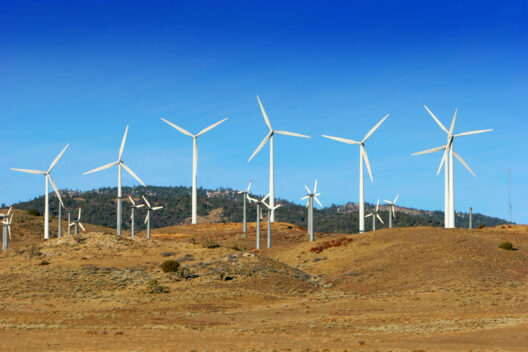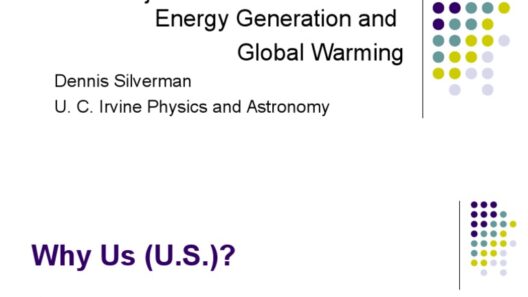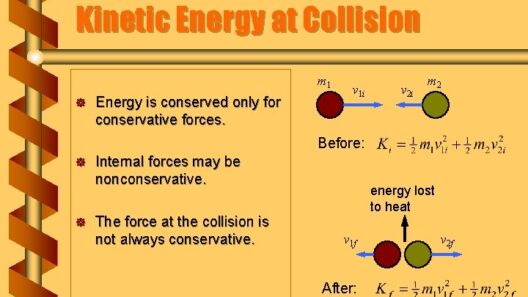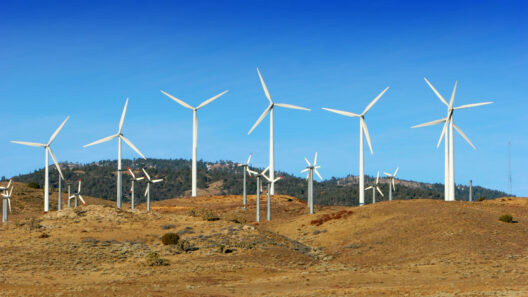The interplay of forces during collisions is a foundational principle in the realm of physics, intriguingly linked to the concept of kinetic energy. The question that often arises is whether kinetic energy is conserved during these collisions. To unravel this enigma, one must delve into the intricate mechanics that govern different types of collisions, and how energy shifts between various forms.
Firstly, let’s establish the core concept of kinetic energy. Defined as the energy an object possesses due to its motion, kinetic energy is contingent upon both its mass and the square of its velocity, expressed mathematically as KE = 1/2 mv², where m denotes mass and v represents velocity. This pivotal formulation highlights that even minor variations in speed can lead to substantial changes in energy.
In the context of collisions, kinetic energy conservation hinges on the type of collision in question. Broadly classified, there are two categories: elastic and inelastic collisions. Each type paints a distinct picture of how kinetic energy behaves during these interactions.
Elastic collisions stand as the embodiment of energy conservation. In such scenarios, both momentum and kinetic energy remain conserved post-collision. This idealized model is prevalent in perfectly elastic collisions, exemplified by the interaction between gas molecules or the collision of two billiard balls. The characteristic bounce of these objects is emblematic of elastic collisions, where the energy transmitted between particles maintains the initial total kinetic energy intact. The fascinating aspect of such collisions is their predictability; physicists rely heavily on the principles governing elastic collisions to model various phenomena.
Conversely, inelastic collisions present a more complex narrative. Here, while momentum remains conserved, the same cannot be said for kinetic energy. Inelastic collisions occur when two objects collide and stick together, transforming some kinetic energy into other forms of energy—such as thermal energy, sound, or deformation—thereby dissipating it. A salient example is a car crash, where vehicles crumple and come to a halt, converting kinetic energy into heat and sound energy. The loss of kinetic energy in inelastic collisions underscores the reality that not all collisions preserve energy, making them a critical focal point for discussions around conservation and efficiency.
Within the broader context of physics, one must also consider the implications of partially elastic collisions. In these instances, kinetic energy is conserved to a certain degree, yet some energy is still lost to other forms, resembling a blend of elastic and inelastic properties. These scenarios often occur in everyday life, such as when a rubber ball is dropped on a surface. The ball may rebound with a diminished height, indicating that while some kinetic energy is conserved, a portion has been converted into heat or sound during the impact.
What then, does this mean for our understanding of kinetic energy in collisions? Embracing the nuances of energy conservation offers a transformative perspective on energy efficiency and the design of systems aimed at minimizing energy loss. By recognizing that kinetic energy can be preserved or transformed, engineers can innovate technologies that enhance efficiency, whether in automotive design or aerospace engineering. For instance, modern crumple zones in vehicles are engineered to absorb kinetic energy and redistribute it safely, illustrating a pragmatic application of energy conservation principles.
The concept of energy conservation extends beyond the realm of collisions and into environmental considerations as well. In a world striving for sustainability, acknowledging the energetic implications of collisions can lead to innovative strategies, promoting energy conservation in industrial processes and everyday mechanisms. The paradigm shift in perspective towards energy conservation is fundamental; rather than merely seeking to quantify energy, we should foster an understanding of its myriad forms and transformations, thus inspiring a collective consciousness geared towards sustainability.
Moreover, the realm of specialized applications further exemplifies the importance of context when discussing kinetic energy conservation. Engineers and scientists channel the principles of collision mechanics to optimize systems, from designing safer vehicles to innovating sports equipment that maximizes energy retention. Each field draws from the foundational principles of kinetic energy conservation, amalgamating theory with practicality in an unceasing quest for improvement and efficiency.
A curious exploration emerges when one considers real-world applications of kinetic energy conservation beyond traditional contexts. Consider the sports world, where athletes like pole vaulters or gymnasts utilize the principles of energy transformation and conservation ingeniously. Their movements illustrate a dance of energy that ebbs and flows—a vivid display of kinetic energy at play. This highlights the pervasive relevance of kinetic energy principles and promises a continuous exploration into the realms of mechanics and energy efficiency.
In conclusion, the question of whether kinetic energy is usually conserved during collisions does not yield a one-size-fits-all answer. The intricacies of elastic and inelastic collisions present a complex interplay of forces and energy transformations that challenge our understanding of motion and energy conservation. By embracing this multifaceted perspective, we can inspire innovations that not only promote efficiency but also resonate with the broader narrative of environmental stewardship and sustainability. The journey of becoming stewards of energy invites a curatorial mindset towards our interactions with energy, nudging towards a future where conservation is not just a principle but a collective endeavor.







